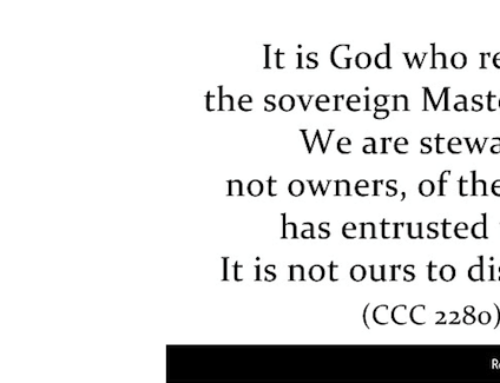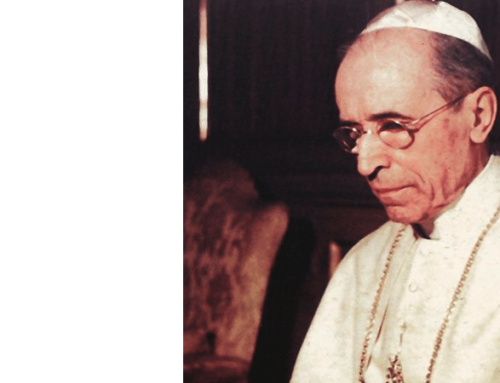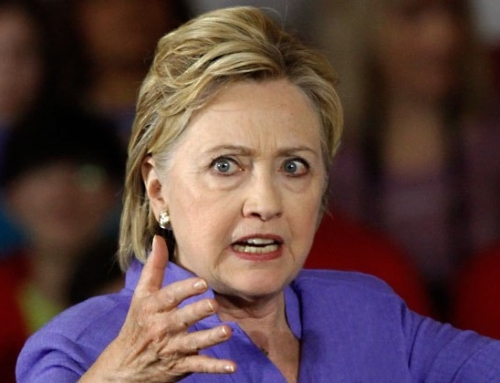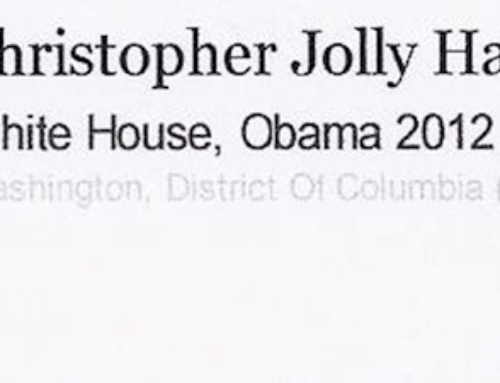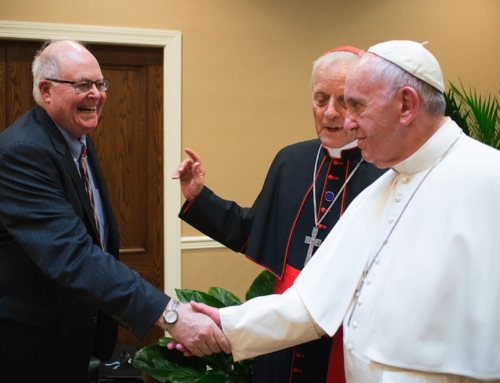Joseph A. Varacalli
January-February 2009
Anne Hendershott, Status Envy: The Politics of Catholic Higher Education, Transaction Publishers
In a recent e-mail sent to me, a distinguished Catholic priest and well-known mover and shaker in Catholic circles made reference to “the forty years war (1965-2005) for the Catholic Church in America that was concluded with a definite victory in 2005 with the election of Pope Benedict XVI.” Father C. John McCloskey followed, “The years ahead are just mop-up operations.” I hope, of course, that my friend and colleague is correct. However, after reading Anne Hendershott’s superb Status Envy: The Politics of Catholic Higher Education, I’m convinced that, at least in the realm of Catholic higher education, something stronger than mops will be necessary to clean up the spiritual and intellectual mess.
In her lucidly written, intellectually rigorous, and compelling narrative, sociologist Hendershott objectively documents and brilliantly analyzes a fundamental shift, most prominent since the mid-1960s, in the frame of reference and subsequent activities of most Catholic scholars and administrators involved in Catholic higher education in the United States. Promoted by vested political, prestige, and economic interests and inextricably intertwined with the mutually influencing realities of status envy, a crisis of faith, and the (illusory) quest for an autonomous individualism, this shift has entailed a rejection of Catholic informed social thought with its application to the broader world to the reduction and cutting down of the Catholic intellectual heritage to secular and politically correct modes of thought. That this rejection of the riches of the Catholic heritage continues mostly unabated in the face of a growing recognition on the part of even the non-Catholic community of the intellectual and moral bankruptcy of what passes for formal education in the society-at-large only adds incredulity as a response and the proverbial salt to the wound. Ironically, at this most perilous time in the history of the American Republic, when Catholic education could have been expected to have articulated a reasoned and empirically based response and critique to the degenerative developments in the larger culture, all that one sees and hears is a Catholic fifth rank marching to the drumbeat of secularists against the Catholic Church and the remnants of Western civilization. As Father Benedict Groeschel of the Cardinal Newman Society has recently stated, for serious Catholics devoted to the pursuit of truth and sound scholarship, “it’s time to take off the gloves; we can’t endure another decade of phony Catholic education.”
What are just a few of the issues broached in Hendershott’s magisterial treatise? She analyzes such topics as the nature of the culture war raging within the Church; the general progressive Catholic misinterpretation of the documents of the Second Vatican Council; the claim of progressive theologians that they represent an “alternative magisterium”; the impact of Monsignor John Tracy Ellis’ now (in)famous 1955 article, “Catholics and the Intellectual Life”; the 1967 Land O’Lakes Declaration demanding an unrestricted “institutional autonomy” (save from government authorities) and “academic freedom” (save from the “politically correct”); the large scale rejection and ignoring of both the spirit and law of Ex corde Ecclesiae; the defining down of authentic Catholic identity in part through widespread changes in the wording of mission statements; the discrimination against orthodox Catholic scholars in hiring practices at Catholic colleges; the reduction of the overall Catholic vision to the institutionalization of a this-worldly social justice, as defined by differing secular interest groups through variations of the “theology of liberation” (socialist, feminist, homosexualist); the de-catholicization of the Jesuit community in the U.S.; the impact of now dominant secular feminist and active homosexual movements within Catholic colleges pushing for support on such issues as legalized abortion, women’s ordination, and same sex marriage; the role of secular accrediting agencies in fostering the assimilation of Catholic colleges along lines acceptable to the current cultural gatekeepers and the need, conversely, to develop authentically Catholic accrediting agencies; the perceived (and artificially contrived) need to officially secularize colleges in order to receive government subsidies; the ineffective role played by most college trustees in guaranteeing an authentic Catholic education; the palpable animus of progressives against the pontificates of John Paul II and Benedict XVI and, conversely, Benedict XVI’s call for the “evangelical pruning” of dissenting and overtly nominal Catholic colleges; among many more.
Professor Hendershott is quite upfront in “naming names,” but is always honest and objective in discussing the key actors who played such a major role in the revolt of Catholic higher education against the Magisterial authority of the Catholic Church. She accurately recounts the words and actions of the dissidents that speak volumes in terms of their philosophies and programs promoted. Readers will find her volume replete with the names, among seemingly countless others, of such progressives as Father Theodore Hesburgh, Rosemary Radford Reuther, Father Robert Drinan, Mary Daly, Charles Curran, Elisabeth Schussler Fiorenza, Father Richard McBrien, Monika Hellwig, Bernard Cooke, Father Roger Haight, Francis Kissling, Daniel McGuire, and Sister Jacqueline Grennan.
One very important part of Professor Hendershott’s analysis is her incorporation of the “actionist” and “social movement” perspectives found within the corpus of sociological thought. Hendershott is not arguing that the secularizing movement within Catholic higher education is merely the result of large scale, anonymous, supposedly inexorable external forces of social change. Rather she makes the case that what has transpired in Catholic higher education is largely the result of the quite conscious and calculating plans and actions on the part of active dissenters who promote, in sociologist Peter L. Berger’s phrase, “an internal secularization from within.” (For more on this theme, see my own books, Bright Promise, Failed Community: Catholics and the American Public Order, and The Catholic Experience in America.) The Catholic Left has successfully executed its long march through many of the organizations of the Church, none more so than in her educational institutions.
Professor Hendershott, as such, offers serious Catholics some hope for the future of both the Church and American civilization through her discussion of the Catholic educational counter-reformation now starting to make its presence felt. As the author points out, just as dissenters have brought Catholic institutions of Catholic higher education down, the concerted planning and activities of orthodox Catholics can and are involved in a form of “counter-insurgency,” i.e., with the grace of God, building up from the ashes. Encouraged, in part, through singular individuals stepping up to the plate in the Church’s time of need and by such Catholic academic groups as the Fellowship of Catholic Scholars, the Cardinal Newman Society, and the Society of Catholic Social Scientists, this orthodox Catholic counter-reformation has involved the recapturing of some long-established Catholic colleges, the creation of new ones, and the relative strengthening of others. These colleges, counter to the typical progressive caricature, are retreating neither from the world nor from non-Catholic ideas. What they are doing, however, is engaging in the evangelization of the broader culture and providing articulate Catholic and natural law responses to, and critiques of, the cognitive and normative claims of secular and non-Catholic worldviews. An excellent resource on the topic of the turn back to orthodoxy in Catholic higher education is the Newman Guide to Choosing a Catholic College.
One particular vignette in the volume deserves special attention. It involves the following claim made by Monsignor George A. Kelly regarding the attitude and response of Father Theodore Hesburgh to the non-compliance by Catholic progressives to Ex corde Ecclesiae. Hendershott recounts the story: “A prominent Notre Dame official went to Father Hesburgh as to a mentor, worrying that the implementation of the Vatican document Ex corde Ecclesiae might bring the American bishops into the governance of the University. The retired president consoled his worried friend, ending his counsel with this message: ‘What is the worst thing that can happen to us? John Paul II will tell the world that Notre Dame is not a Catholic University. Who will believe him?’”
In one of his many classic books, Battle for the American Church Revisited, Monsignor Kelly gives what should be the standard orthodox Catholic response to Father Hesburgh’s arrogance and religious disobedience. For Monsignor Kelly, “(Catholic) college and university presidents should be given a fixed time to indicate their acceptance of the norms (associated with Ex corde Ecclesiae) and a reasonable period to adjust their catalogs and operating procedures accordingly…. Institutions that do not choose these ordinances are to be denied use of the name Catholic. The faithful are entitled to know the names of those institutions accredited by bishops as Catholic. The Church may lose a goodly number of colleges in the process. Let them go.” In other words, the Bishops of Catholic America should call the bluffs of many in the progressive Catholic educational establishment and willingly accept any subsequent institutional losses. The Bishops and all concerned Catholics then should proceed unabated with the resurrection of Catholic higher education—for the sake of individual souls, the health of the Church, and the welfare of civilization.
May the publication of this book give substantial hope and inspiration to the remaining and future defenders of the Catholic ideals of the integration of faith and reason and orthodoxy in religious commitment with true academic excellence. I end this review, as does Professor Hendershott, with reference to the vision of John Henry Newman, who, in his Idea of the University, stated that the University must be “the seat of wisdom, the light of the world, and the minister of the faith.”
Joseph A. Varacalli, Ph.D., is Director of the Center for Catholic Studies at Nassau Community College and a member of the Catholic League’s Advisory Board.




